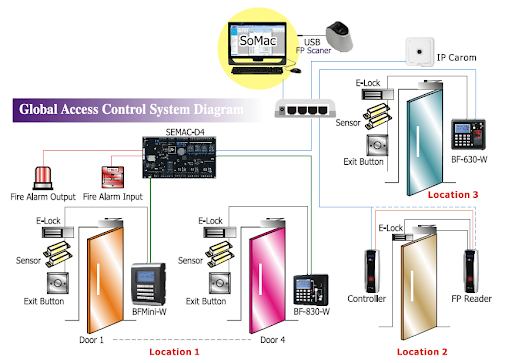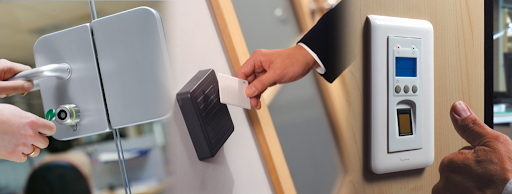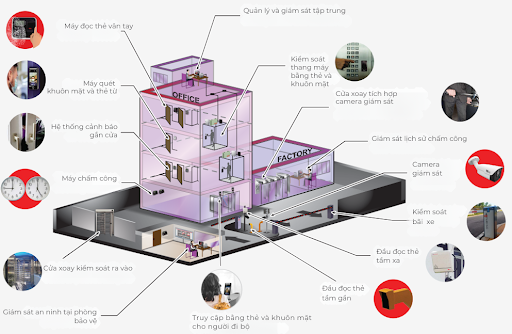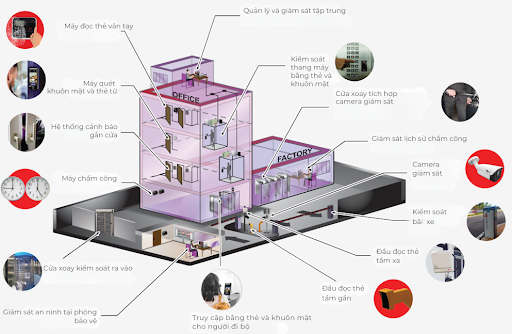Introduction to Access Control Systems and Related Devices
1. What is an Access Control System?
An Access Control System is a management solution that allows or restricts access rights to specific areas to ensure security, efficient personnel management, and asset protection. This system can be used in office buildings, factories, hotels, hospitals, schools, and many other environments.
2. Main Components of an Access Control System
Access control systems include various devices and technologies combined to authenticate, record, and manage entry and exit:
- Central controller: The main processor that connects to input and output devices to control access.
- Authentication devices:
- Door control devices:
- Management software system: Used for monitoring, granting access rights, and storing entry and exit data.

3. Common Types of Access Control Systems
- Door access control systems: Used in offices and businesses to restrict access to important areas.
- Elevator control systems: Limit elevator usage rights to specific floors.
- Parking lot control systems: Combined with license plate recognition or RFID cards for automatic vehicle access.
- Biometric access control systems: Using facial recognition or fingerprints to enhance security.
4. Advantages of Access Control Systems
- Enhanced security: Prevents unauthorized access, protects assets and people.
- Improved management efficiency: Helps monitor and record access history accurately.
- Integration with other systems: Can connect with surveillance, alarm, and time attendance systems.
- Convenience and flexibility: Users can use cards, PIN codes, biometrics, or phones for access.
5. Practical Applications of Access Control Systems
- Offices and businesses: Ensuring only authorized employees can enter work areas.
- Hotels: Smart lock systems allow guests to use keycards or mobile applications to enter rooms.
- Factories and industrial zones: Control the entry and exit of workers and visitors.
- Schools and hospitals: Restrict access to sensitive areas such as laboratories and medicine storage.
- Smart parking lots: Automatically recognize license plates and allow vehicles to enter and exit without stopping.
6. Development Trends in Access Control Systems
- Application of Artificial Intelligence (AI) and IoT: Systems can learn user habits and detect anomalies.
- Contactless biometrics: Facial recognition or iris scanning instead of fingerprint scanning.
- Remote access control: Managing access through cloud platforms, allowing remote control.
- Integration with comprehensive security systems: Combining with surveillance cameras and fire alarm systems to create a comprehensive security solution.
Conclusion
Access control systems are important solutions for managing access and ensuring security for critical areas. With technological advancements, access control solutions are becoming increasingly smart, flexible, and secure, meeting the growing security needs across various fields.
Table of contents


